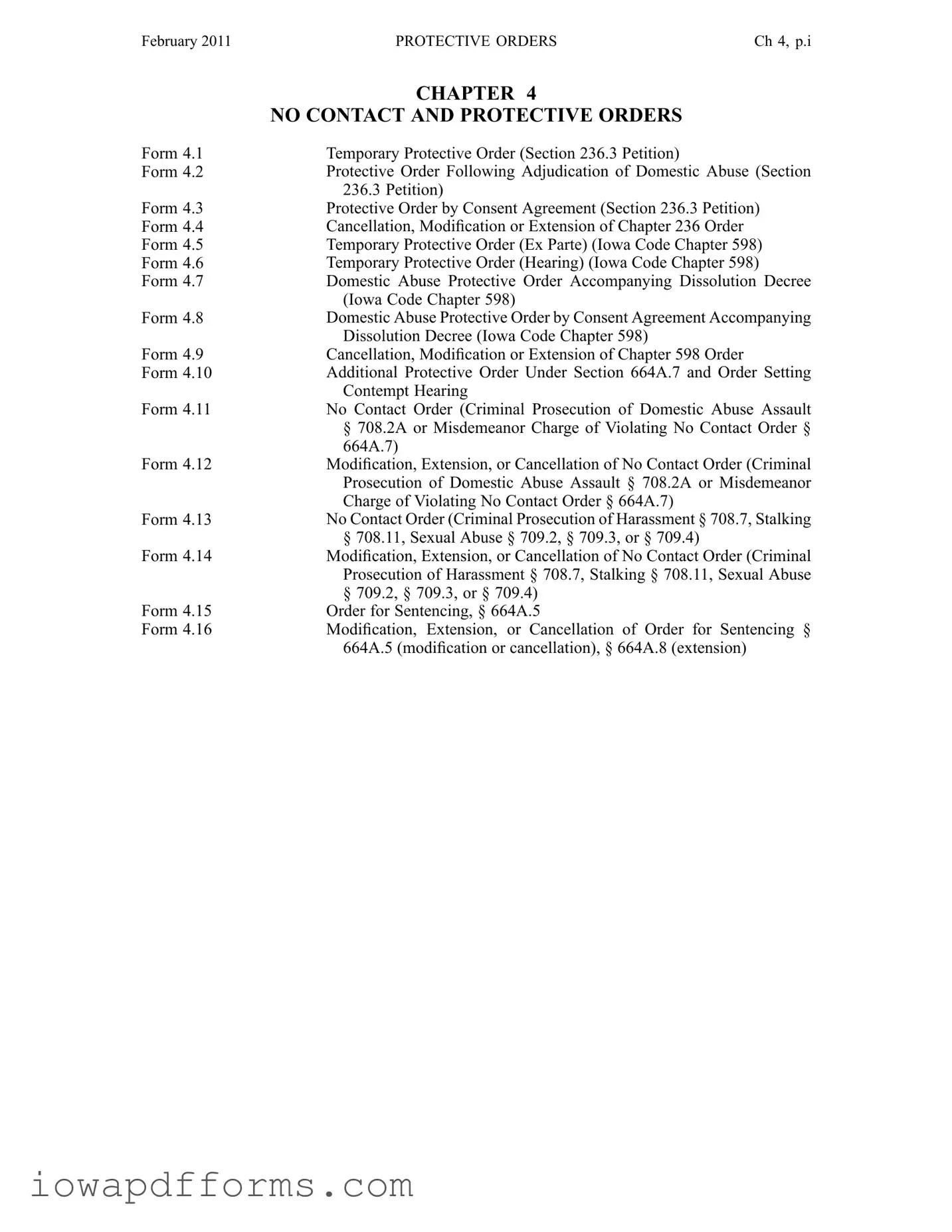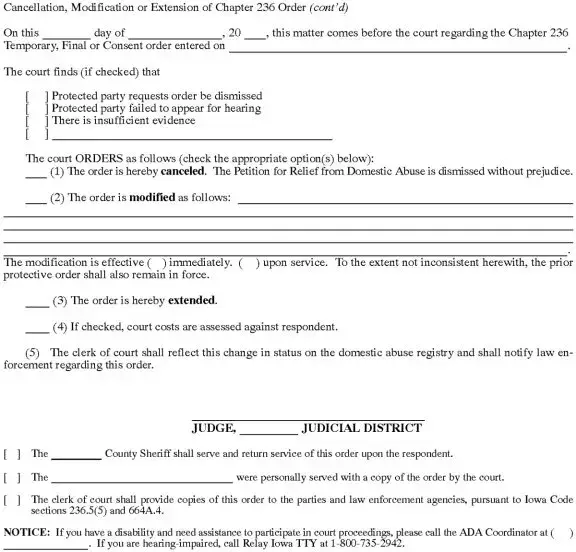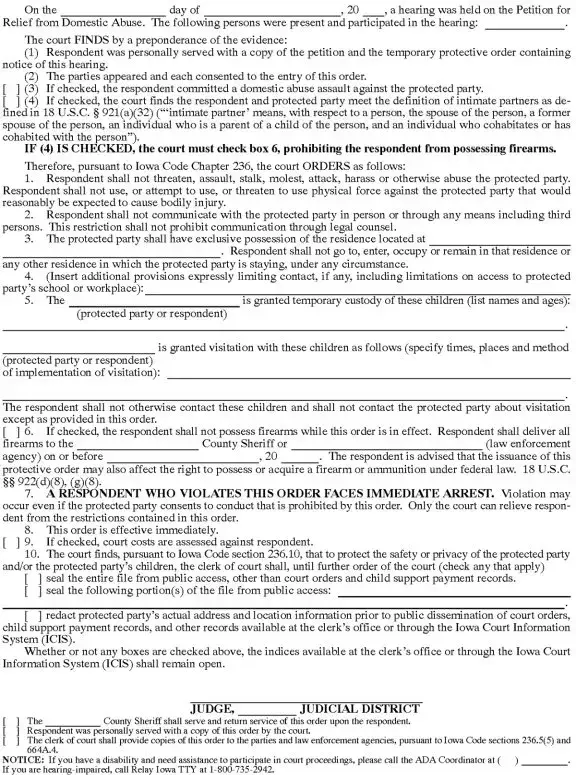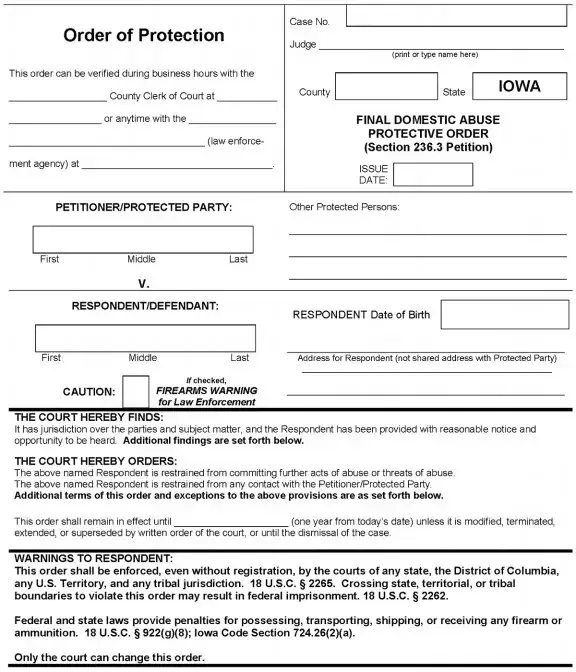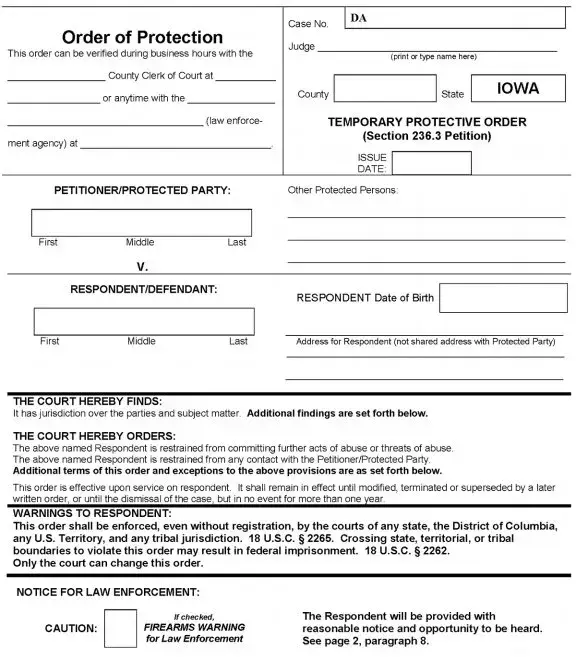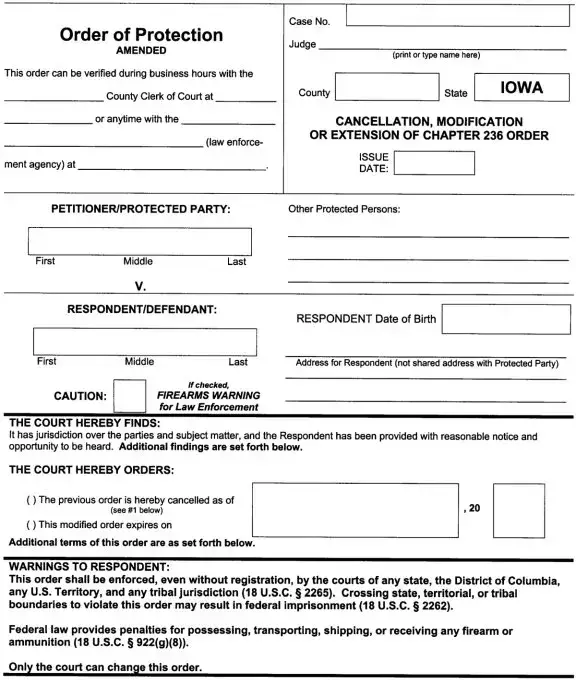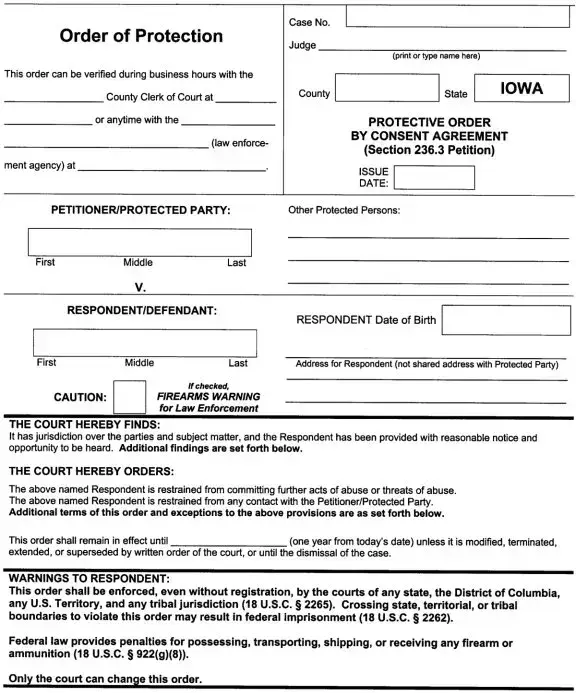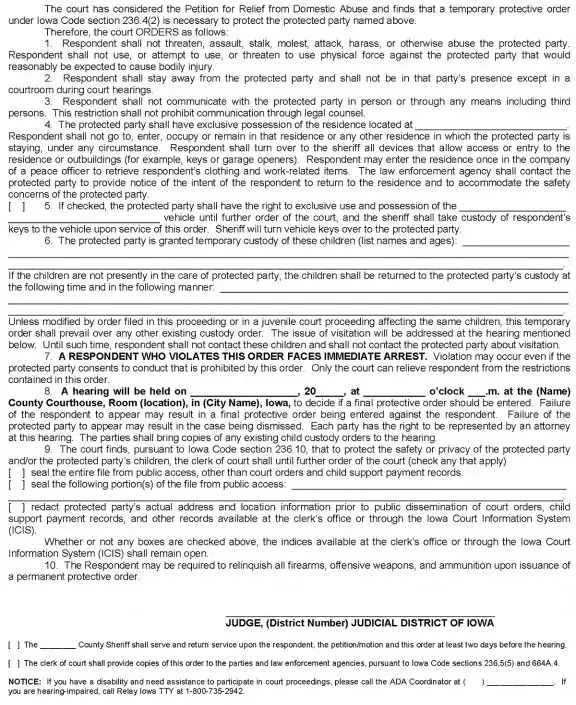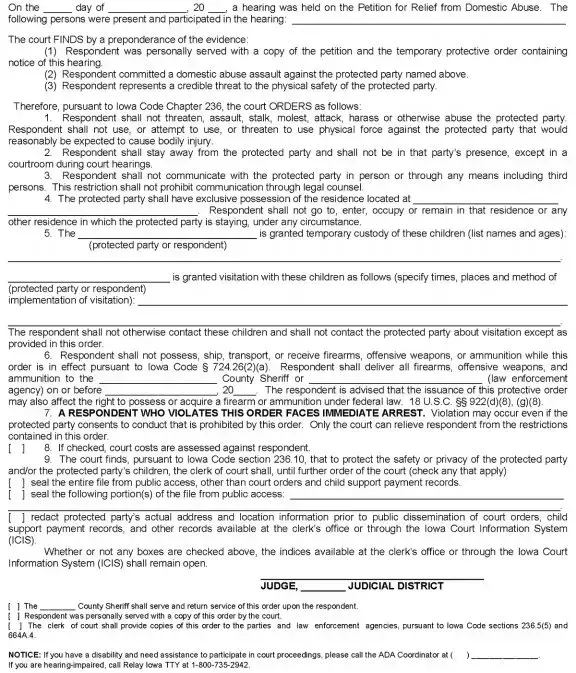The Temporary Protective Order (Section 236.3 Petition) is similar to a Restraining Order in other jurisdictions. Both documents serve to protect individuals from harassment or harm by prohibiting contact with an alleged abuser. A Temporary Protective Order is often issued quickly to provide immediate relief, while a Restraining Order may follow after a more thorough examination of the case. Both orders can be temporary or permanent, depending on the circumstances and the needs of the victim.
The Protective Order Following Adjudication of Domestic Abuse (Section 236.3 Petition) resembles a Final Restraining Order. After a court has made a determination regarding domestic abuse, a Final Restraining Order is issued to provide ongoing protection. This document is crucial for establishing long-term safety for the victim and may include provisions such as custody arrangements or financial support, similar to what is often included in a Protective Order following an adjudication.
In the realm of vehicle transactions, having a formalized record is essential for both parties involved. The Virginia Motor Vehicle Bill of Sale form acts as that crucial document, safeguarding the interests of sellers and buyers alike. To streamline the process of creating this important record, individuals can access an editable version of the form at billofsaleforvehicles.com/editable-virginia-motor-vehicle-bill-of-sale/, ensuring a smooth and transparent transfer of ownership.
The Protective Order by Consent Agreement (Section 236.3 Petition) is akin to a Mutual Restraining Order. In cases where both parties agree to certain terms to avoid conflict, a Mutual Restraining Order can be established. This type of agreement can help maintain peace between the parties involved, much like a Consent Agreement, which outlines the terms both parties have accepted to ensure safety and prevent further incidents.
The Cancellation, Modification, or Extension of Chapter 236 Order is comparable to a Motion to Modify a Restraining Order. If circumstances change, such as the need for additional protection or a change in living arrangements, either party may seek to modify the terms of the existing order. This process allows the court to reassess the situation and make necessary adjustments, ensuring that the protective measures remain relevant and effective.
The Temporary Protective Order (Ex Parte) (Iowa Code Chapter 598) is similar to an Emergency Protective Order. These orders are typically issued without the presence of the alleged abuser to provide immediate protection in urgent situations. Both types of orders are designed to offer quick relief to individuals in danger, allowing them to seek safety before a full hearing can be conducted.
The Temporary Protective Order (Hearing) (Iowa Code Chapter 598) is akin to a Standard Protective Order. After a hearing, where both parties can present evidence, a Standard Protective Order may be issued to provide ongoing protection. This process ensures that both sides have a chance to be heard, similar to the hearing process involved in obtaining a Temporary Protective Order.
The Domestic Abuse Protective Order Accompanying Dissolution Decree (Iowa Code Chapter 598) resembles a Protective Order issued during divorce proceedings. When domestic abuse is a factor in a divorce, courts often issue protective orders to ensure safety during the dissolution process. Both documents aim to protect individuals from harm while addressing the complexities of marital separation.
The Domestic Abuse Protective Order by Consent Agreement Accompanying Dissolution Decree (Iowa Code Chapter 598) is similar to a Settlement Agreement in divorce cases. When both parties agree to terms regarding protection during the divorce, this type of order can be established. It allows for mutual understanding and cooperation, focusing on safety while navigating the emotional challenges of separation.
The Cancellation, Modification, or Extension of Chapter 598 Order is comparable to a Motion to Modify a Divorce Decree. If there are changes in circumstances, such as a shift in living situations or the need for different protective measures, either party can request a modification. This ensures that the protective order remains effective and relevant to the current situation.
The Additional Protective Order Under Section 664A.7 and Order Setting Contempt Hearing is similar to a Contempt Motion in civil cases. If one party violates the terms of a protective order, the other party may seek enforcement through a contempt hearing. This process holds individuals accountable for their actions, ensuring that the protective measures are taken seriously and upheld by the court.
